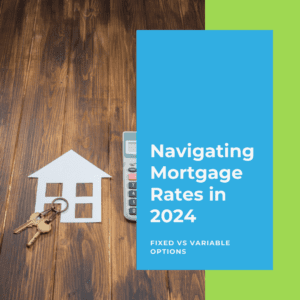In previous years the question of “should I pay down my mortgage sooner or use the funds to invest” was a challenging question to answer. It involved considering your age, your mortgage interest rate, and how comfortable you are with risk rating for investments. But as mortgage rates are at an all-time low, it would be beneficial for you to chip away at your mortgage now as aggressively as you can to save yourself in the long run.
Although it may seem counterintuitive to some people to pay down a mortgage that you have a 2% interest rate on and invest with the potential to get 3%, there are factors in play that may not be immediately recognizable.
How may inflation affect your decision?
When inflation starts to climb, the Bank of Canada adjusts mortgage rates to slow inflation by limiting the number of funds in the economy. High inflation rates diminish the value of savings and investments, which means that it is worth less than how much you have squirreled away in the coming years. For example, inflation in November 2021 in Canada was recorded at 4.7%, which means any savings you have reserved were worth almost 5% less than what you put away. Based on this, consider putting any additional funds towards your mortgage to pay down your mortgage principal before mortgage rates increase.
Ways to pay down your mortgage
Most mortgages allow, without a penalty, for you to pay down 10-20% annually as a lump sum towards the principal of your mortgage and increase your mortgage payments 10-100% from the regular payment amounts. To ensure that you will not be hit with a prepayment penalty, make sure you check these allowances with your mortgage provider before making a lump sum payment or changing your current mortgage payment.

Increasing Mortgage Payments
Most mortgage providers allow you to increase your regular mortgage payments by at least 10%, and some up to double your regular payments. Any increase that you make over your regular payment will go directly toward your mortgage principal. For example, if your payment is $1000 biweekly, and you are increasing the up the 10% to $1100 biweekly, you will chip away $2600 each year, in turn shrinking the amortization of your mortgage.
Accelerated Mortgage Payments
If you have a monthly payment, there is an additional way to increase your mortgage payment to pay down your mortgage sooner. Let’s say your monthly mortgage payment is $2000. If you were to divide this payment by two and switch to a biweekly payment, you would be making two additional mortgage payments a year. This is called an accelerated mortgage payment.
Lump-sum Prepayments
Before putting a lump-sum payment on your mortgage, make sure to confirm the limit you are permitted to pay without a prepayment penalty charge. Usually, you are allotted 10-20% of the original mortgage amount each year. However, if you are at your renewal time, you may be able to put down any amount for a lump-sum payment, as you may be outside of your term’s contract.
Keep Payments the Same at Renewal Time
At the beginning of your new mortgage term at the time of renewal, your payments are based on the time frame remaining on your amortization schedule, as well as the remaining amount owing. If you had made additional payments or increased payments in your last term or your new mortgage rate is lower than your previous one, your payments may be substantially lower than before. Think about keeping your mortgage payments the same as before you renewed, and this could make a giant difference in how much you save in interest while decreasing your amortization.
If you can make small adjustments in your life to put towards your mortgage principal, this will pay down your mortgage faster, save you on the interest you spend on your mortgage, and reduce the length of your amortization.
Rampone-Marsh isn’t just a team of mortgage brokers. They are mortgage planners. Let’s talk about putting our experience to work for you.














